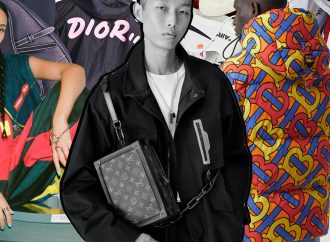In today’s digital-first landscape, visuals are often the first—and most powerful—way brands communicate with the public. From product launches to social justice campaigns, the imagery chosen by public relations (PR) professionals tells a story that can either affirm or exclude. As technology evolves, particularly with visual search tools powered by artificial intelligence (AI), the importance
In today’s digital-first landscape, visuals are often the first—and most powerful—way brands communicate with the public. From product launches to social justice campaigns, the imagery chosen by public relations (PR) professionals tells a story that can either affirm or exclude. As technology evolves, particularly with visual search tools powered by artificial intelligence (AI), the importance of diverse, inclusive imagery in PR has reached a new frontier.
Visual search isn’t just about recognizing products anymore. It’s now deeply intertwined with culture, identity, and representation. For PR teams committed to authentic storytelling and inclusive engagement, this presents both a challenge and an opportunity. This blog explores how visual search is reshaping brand communications, why diverse imagery matters, and how PR professionals can lead the way in building a more inclusive visual ecosystem.
1. Understanding Visual Search Technology in PR
Visual search allows users to search for information using images rather than text. Platforms like Google Lens, Pinterest Lens, and Amazon’s visual tools use AI to analyze visual elements and return contextually relevant results. In PR, this opens up new creative and strategic possibilities, including:
If you’re searching for a reliable PR company in Delhi, we have the expertise you need. Reach out to us at Twenty7 Inc!
-
Discovering image trends across regions and demographics
-
Ensuring visual consistency across global campaigns
-
Making brand assets searchable and accessible via visual cues
-
Increasing discoverability of products or cultural campaigns via images
But as visual search becomes more integrated into how audiences interact with content, it’s essential to ask: Whose images are showing up? Who’s being seen? And who’s being left out?
2. Why Diverse Imagery Matters in PR
Historically, mainstream imagery in advertising and PR has centered on dominant cultural narratives—often white, Western, able-bodied, cisgender, and heteronormative representations. This lack of diversity isn’t just outdated; it’s damaging.
Inclusive imagery:
-
Validates identities: Seeing yourself reflected in brand stories builds connection and trust.
-
Expands market reach: Diverse audiences are more likely to engage with brands that reflect their world.
-
Strengthens brand reputation: Companies seen as inclusive are more likely to attract media attention and public goodwill.
When PR campaigns prioritize diverse visuals, they shift cultural norms, challenge stereotypes, and open the door for broader participation in public narratives.
3. The Problem with Biased Visual Algorithms
The growing use of AI in visual search comes with risks. Many visual recognition algorithms are trained on large image datasets that are not diverse, leading to skewed results. For example:
-
Searching for “professional hairstyle” may return mostly white individuals in suits.
-
A query for “beauty” might favor Eurocentric features and exclude people of color, older individuals, or those with visible disabilities.
-
LGBTQ+ or non-binary identities are often absent or inaccurately represented in AI-generated results.
This creates a feedback loop in which underrepresented groups are further marginalized because they don’t show up in algorithmic results. For PR professionals, relying solely on generic image libraries or AI-generated visuals can unintentionally reinforce exclusion.
4. How PR Can Use Visual Search More Inclusively
To use visual search tools responsibly and effectively, PR teams must adopt inclusive strategies:
Are you seeking a trusted PR company in Bangalore to manage your communications? Reach out to Twenty7 Inc today!
a. Curate Your Own Diverse Image Libraries
Instead of relying on stock photography that often lacks representation, create custom image banks featuring real people from diverse backgrounds—across race, gender, ability, age, and body type.
b. Tag and Optimize Inclusively
Use inclusive language when tagging photos for SEO and visual search (e.g., “Black family celebrating Eid” or “wheelchair user giving keynote at tech conference”). This improves discoverability and helps algorithms “learn” inclusive patterns.
c. Audit Your Visual Footprint
Use tools to analyze who is represented in your brand’s imagery. How many people of color appear on your website or social media? Do your visuals reflect your audience—or just your internal team?
d. Partner With Inclusive Creators
Work with photographers, influencers, and content creators from marginalized communities to build a visual language rooted in authenticity, not tokenism.
5. Leading Platforms Are Making Shifts—And So Should PR
Major tech companies are beginning to acknowledge the importance of visual inclusivity:
-
Google has pledged to reduce algorithmic bias in its image search tools and has started incorporating more diverse results for generic terms.
-
Pinterest launched a “skin tone” filter for beauty-related searches to help users find content that reflects them.
-
Getty Images and Shutterstock now offer curated collections focused on LGBTQ+, BIPOC, and disability representation.
These are important steps—but not enough on their own. PR professionals must advocate for representation not just in image libraries, but also in how stories are framed and who gets to tell them.
6. Visual Storytelling as Cultural Influence
Images are not neutral. They carry social meaning, influence public perception, and shape our understanding of culture. That’s why inclusive visual storytelling isn’t just a trend—it’s a responsibility.
For instance:
-
A campaign celebrating Pride should feature real queer relationships, not models posing for a rainbow-themed ad.
-
A story about tech innovation should show diverse engineers, not just white men in hoodies.
-
A healthcare campaign should reflect the reality that disability, aging, and chronic illness are part of everyday life.
Visual storytelling in PR must evolve from aspirational aesthetics to reflective authenticity. People want to see the world as it is—diverse, complex, and beautiful.
7. The Business Case for Inclusive Visual Strategy
Inclusion is not only the right thing to do—it’s good for business. According to studies:
-
69% of Gen Z consumers say they are more likely to buy from brands that represent diversity in their ads.
-
Campaigns with diverse representation perform 25% better in terms of audience engagement.
-
Visual content that reflects real people builds higher emotional resonance—a key factor in PR success.
Inclusive visual PR isn’t just about ethics; it’s a strategic advantage in an increasingly diverse world.
8. The Next Frontier: AI-Powered Inclusive Visual Search
Looking ahead, we may see:
-
Customizable visual search experiences, where users can filter based on identity preferences (e.g., finding beauty tutorials by Black creators or fashion tips for plus-size individuals).
-
AI that learns from inclusive datasets, trained specifically to identify and promote diverse content.
-
Real-time diversity audits for visual content before campaigns are launched.
These innovations will redefine how brands show up in the world—and PR will be at the forefront of that change.
If you’re searching for a reputable PR company in Hyderabad, we’re here to assist! Reach out to us at Twenty7 Inc.
Conclusion
The future of inclusive PR lies in how we see—and help others to see. Visual search is no longer just a tool for convenience. It is a powerful cultural interface, influencing who is visible, valued, and validated in our public conversations.
As PR professionals, we have both the technology and the responsibility to build visual narratives that reflect the real world—in all its rich, intersectional diversity. By combining strategy with sensitivity, creativity with conscience, we can ensure that the next generation of PR doesn’t just reach people—it represents them.






















